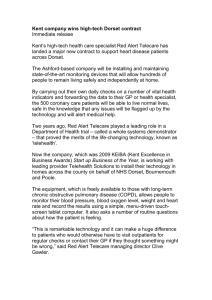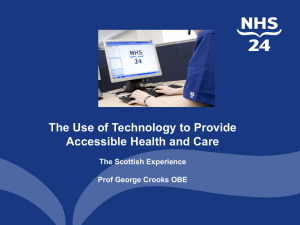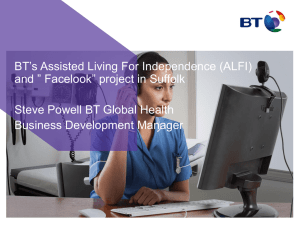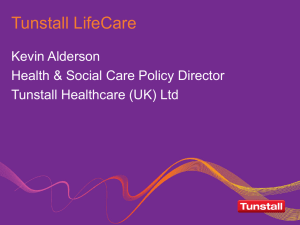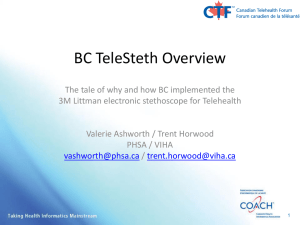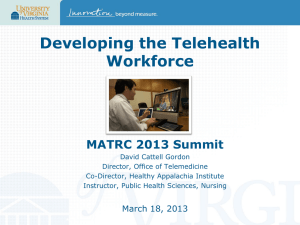Why do we need to promote the adoption of telecare and telehealth?
advertisement
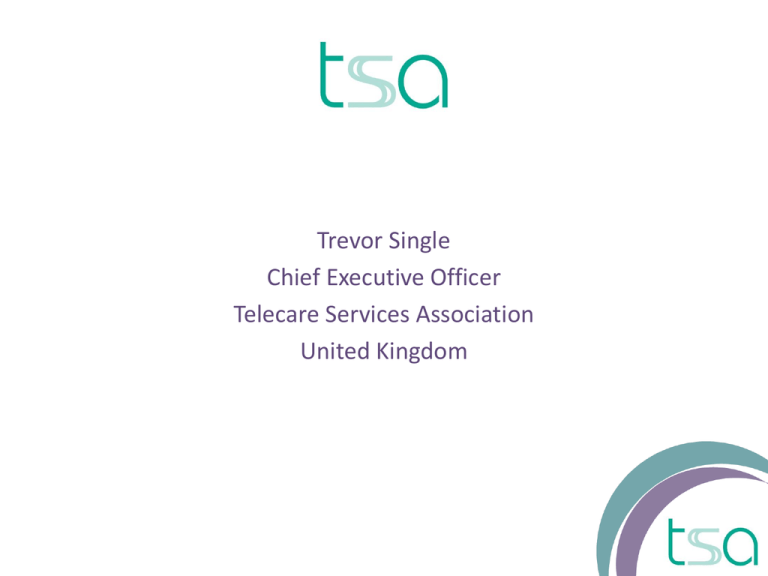
Trevor Single Chief Executive Officer Telecare Services Association United Kingdom Telecare Services Association Representative trade body for the telecare and telehealth industry Membership – over 360 organisations • Telecare and Telehealth Service Providers (e.g. monitoring centres, mobile response services, installers) • Technology suppliers • Commissioners & Universities • Mainly UK, but growing international membership Members provide telecare and telehealth service delivery to over 1.7 million users • 1.4 million (pendant alarm) • 0.3 million (personal & environmental sensors) TSA Integrated Telecare and Telehealth Code of Practice • World first • Quality standard for service delivery to the patient / user • Over 140 organisations externally accredited Why do we need to promote the adoption of telecare and telehealth? Do we need to change? 15.5m people in the UK have LTCs (more than 1 in 4 of the population) In the next five years over 65s will rise from 9.3m to 16.8m 1 million people are carers 700k people with dementia – within next 30 years figure will double and cost £50bn a year Population age profile Chronic disease NHS Budget There is a growing demand for health and care services and ever increasing expectations from the public Why do we need to promote the adoption of telecare and telehealth? Impact on Hospital Services Acute Beds: 107,444 in England – a decline of 33% in last 5 years 51,000 occupied by 65 years or older Age: 65% of people admitted to hospital are over 65 years of age. Over 85 account for 25% bed days Length of Stay: Average length of stay 7.7 days. Those over 85 years spend 8 days longer than those aged under 65 years. Examining the case for telecare and telehealth Department of Health funded a Whole Systems Demonstrator project (£45m / US$70m) to show what telehealth and telecare is capable of Largest randomised clinical trial in the world to review the use of telecare and telehealth (launched in 2007) 3 projects in Newham, London; Kent and Cornwall – each with around 2,000 patients Aims • a clear evidence base to support important investment decisions • see how technology can support people to live independently, take control • and be responsible for their own health and care. Headline findings – December 2011 Telehealth headlines (5 December 2011) show reductions in; – – – – – mortality by 45% emergency admissions by 20% A&E visits by 15% bed days by 14% elective admissions by 14% Quality of life remains broadly the same Despite high cost of programme in WSD utilisation changes show an overall saving of around £180 per head To achieve the benefits needs service transformation Patient satisfaction very high - age is no barrier Enabling three million people to benefit from telehealth and telecare services over the next five years TSA Mission & Activities - to lead and support the Telecare and Telehealth sector to enhance people’s independence and quality of life by inspiring, promoting and driving strategy, innovation and standards Unlocking the potential of the telecare and telehealth industry Working with Government on key strategic developments, such as ‘3millionlives’ Developing universal quality standards, including the Integrated Telecare and Telehealth Code of Practice Offering help and advice to those developing and delivering telecare and telehealth products and services. Bringing the industry together through key events, including the annual International Telecare and Telehealth Conference. Next Steps / Opportunities increase engagement in promotion of telecare & telehealth; adopt best practice by existing providers; identify scope for partnering opportunities; encourage innovative approaches to technology enabled health and social care services.

